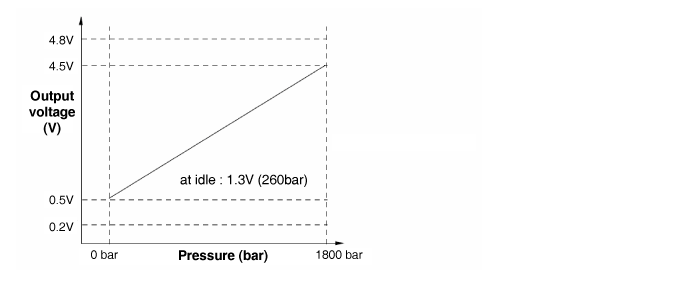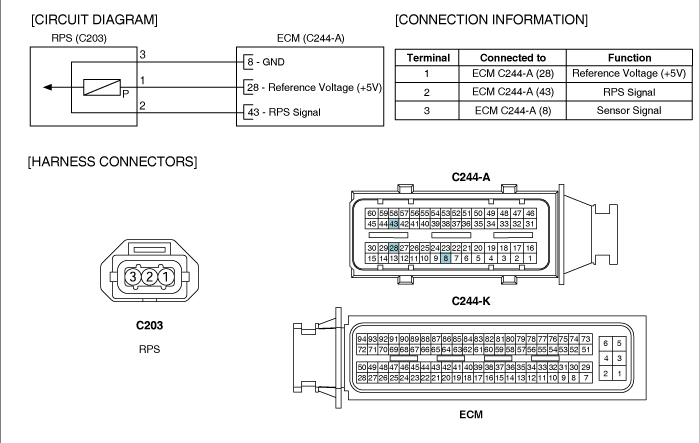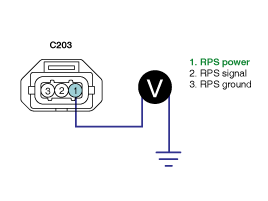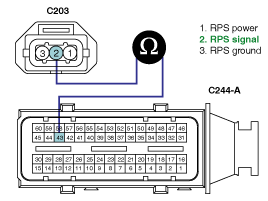Monitor "FUEL PRESSURE MEASURED", "INJ. PUMP REGULATOR","RAIL PRESS. REGULATOR1" parameter on the Scantool.
Idle(without load) | Accelerating(stall test) | Diagnosis | |
FUEL PRESSURE MEASURED | 27 ± 5 Mpa | above 75 Mpa | press. increases |
INJ. PUMP REGULATOR | 34 ± 3% | 38 ± 3% | duty increases |
RAIL PRESS. REGULATOR1 | 16 ± 3% | 45 ± 3% | duty increases |
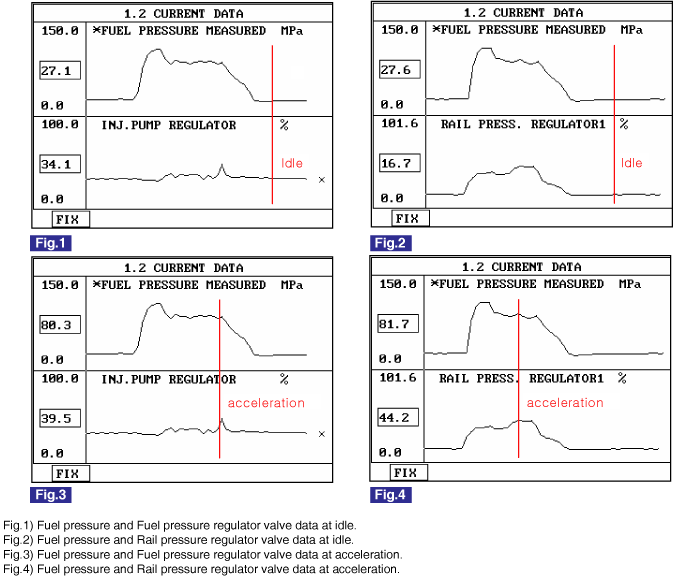
The waveform of fuel pressure regulator valve installed at high pressure pump(fuel detecting MPROP) shows 35 ± 3% duty at idle, duty rises to approx. 38% at acceleration to raise rail pressure.
The waveform of rail pressure regulator valve installed at common rail shows 17 ± 3% duty at idle, duty rises to approx. 45% at acceleration to raise rail pressure.


